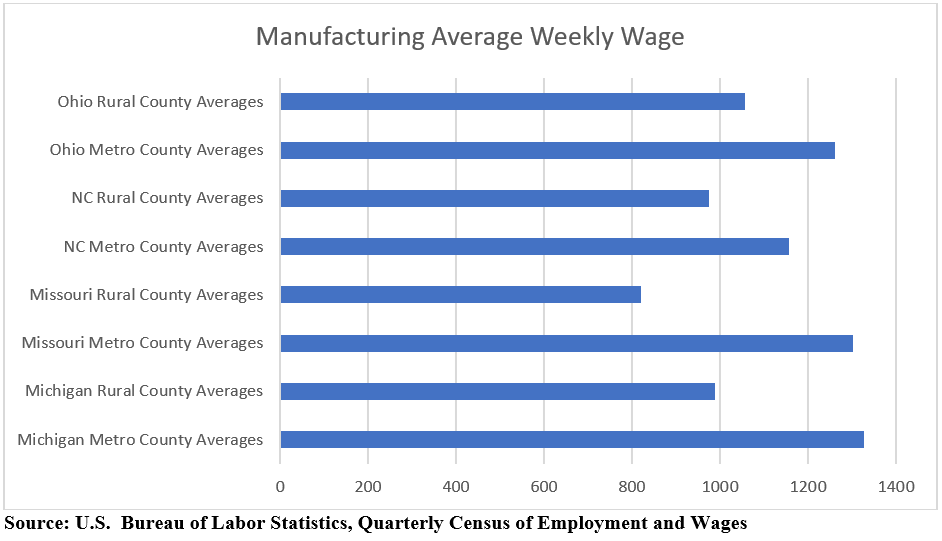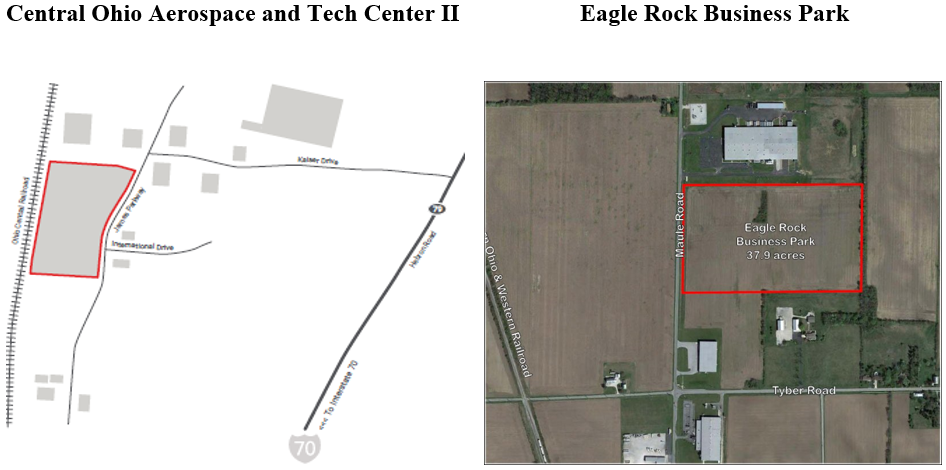Rural communities’ cost of doing business are substantially lower than their urban counterparts. The largest cost for nearly every company is labor. Paying workers, unless it is a data center or some other energy intensive, capital intensive business, will be the largest cost facing any company. Regions with competitive wage rates are highly attractive for corporate site location projects. As the table below illustrates, rural counties in Michigan, Missouri, North Carolina, and Ohio pay manufacturing workers a substantially lower wage compared to their metro urban counterparts in the same states. The same factor in an urban setting costs substantially more to operated. As an example, the average manufacturing worker in Ohio earns over $54,000 in a rural community and a factor with 100 worker spends $5.4M on worker wages. That same worker in an Ohio metro area earns over $65,000 a year and 100 workers costs that same company over $6.5 M in payroll. This million-dollar wage differential adds up to tens of millions of dollars over a period. More importantly from a public policy standpoint, a $54,000 job in a rural community creates substantially higher economic opportunity for that worker in a community that lacks many high-wage, advanced services, and technology jobs. Rural Missouri has the lowest average manufacturing worker weekly wage compared to Ohio, Michigan, and North Carolina.

Workforce costs are not the only factor impacting rural communities lower cost of doing business. Lower real estate costs are another important factor making rural markets attractive for corporate site location projects. First, real estate is all driven by local factors impacting the site in question. So, generalizations can be challenging but the laws of supply and demand and the rapid growth of urban and suburban markets have driven up prices in these urban markets. Second, many urban sites are complex compared to rural greenfield sites. Urban sites in many cases involve a reuse of land which has benefits from an infrastructure standpoint but may have environmental issues as well as be in a struggling neighborhood with residents who may or may not wish development. An example is telling for how rural real estate costs compare to urban or suburban counterparts.

Two parcels being marketed on AEP Quality Sites website are both certified by AEP as primed and ready for food processing and industrial development, they are of similar size and both are greenfield developments. Rural Eagle Park Business Park in Tiffin, Ohio is listed for $15,000 an acre and its suburban competitor, Central Ohio Aerospace and Tech Center II in Health, Ohio is listed for $66,000 an acre. Heath is in ex-urban Licking County just east of the growing Columbus, Ohio market surrounded by a large cluster of industrial development. Tiffin is in Northwest Ohio in a rural community that is strongly connected to regional agriculture and the site is certified for a food processing manufacturing facility. Both are good prospects for development.